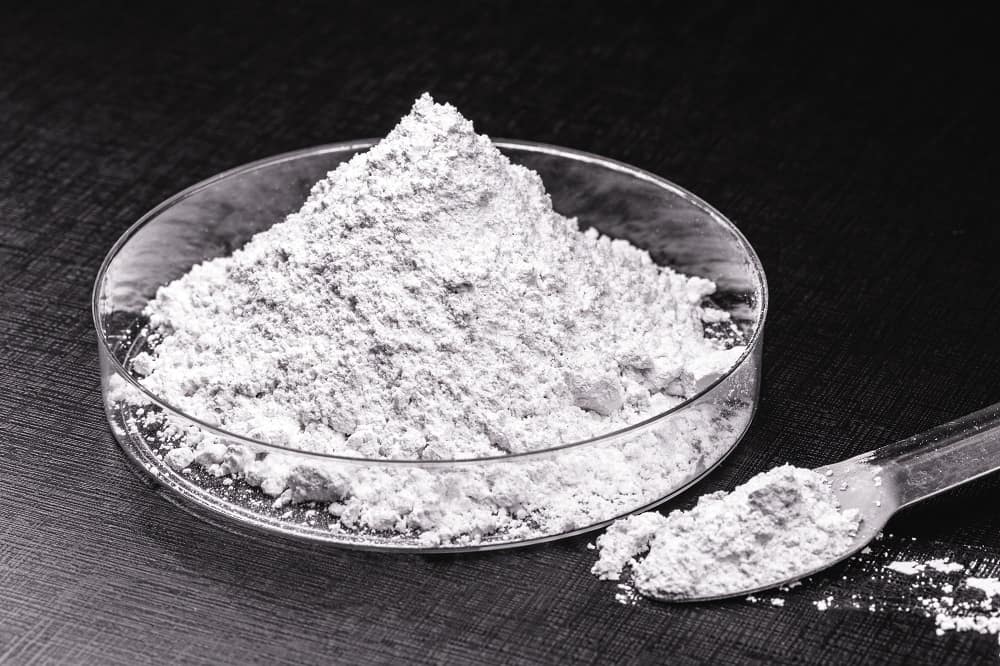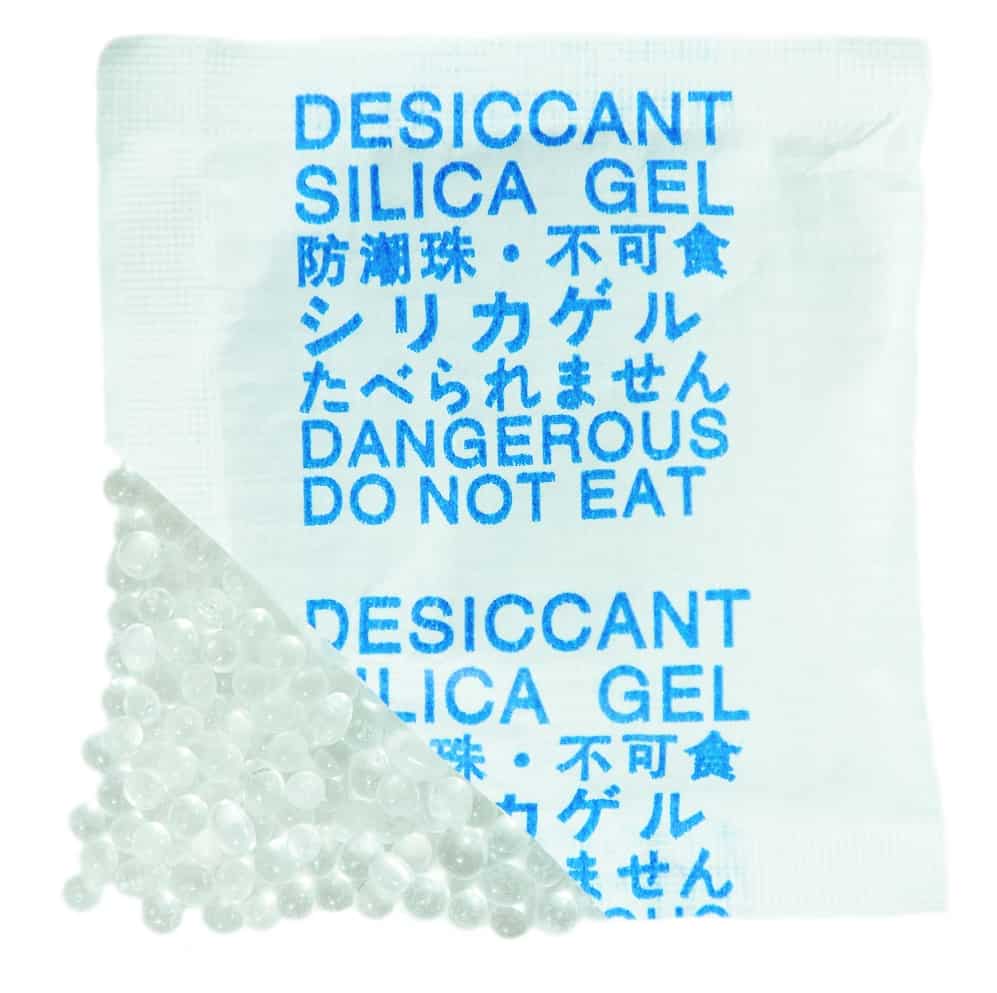Most commonly found in nature in the form of quartz, silicon dioxide is a mineral that can be naturally found in plant-derived food products. Silicon dioxide can also be used as a food additive that prevents powdered food products from clumping and help improve the overall quality of beverages contaminated with organic compounds.
Since silicon dioxide does not involve any animal product or derivative in its composition and its production, silicon dioxide is vegan.
Table of Contents
Silicon Dioxide

Silicon dioxide, also known by its chemical formula SiO2, is a naturally occurring mineral that is commonly found in nature. Also known as silica, silicon dioxide is a major constituent of sand and is estimated to make up to 59% of the earth’s crust (1).
In nature, silicon dioxide is most commonly found as quartz. However, the mineral can also exist beyond the abiotic. Silicon dioxide can also be found in several living organisms.
For one, plants produce microscopic stone-like structures called phytoliths that are primarily made of silicon dioxide. These phytoliths have been associated with plant defense, but studies suggest that these structures might also provide additional physiological benefits.
Many protists and algae have also been observed to create external coverings primarily composed of silicon dioxide. These organisms include diatoms, radiolarians, and some amoebas. Many sponges also use silicon dioxide to form their skeletal framework.
Silicon compounds such as silicon dioxide are often mistaken with silicone – a polymer that is primarily synthesized with a silicon base. While the two possess the same elemental backbone, silicone has a relatively different range of functions. Presenting as an oil or a rubber-like substance, silicone is more associated with lubricants, paints, breast implants, sealants, dry cleaning, cooking utensils, and toys.
Silicon dioxide has many uses in numerous industries. Most of the commercial silica used is in the form of sand in the construction industry. However, purer forms of silicon dioxide are also used in various products. As a viscosity control agent, silicon dioxide can be found in inks, paints, corrosion-resistant coatings, and such.
For long-term stabilization as an excipient, silicon dioxide is also heavily used in the pharmaceutical and cosmetic industries.
In the food industry, silicon dioxide is traditionally used as an anti-caking agent in powdered products. With its hygroscopic properties, silicon dioxide effectively adsorbs water and prevents powdered products from clumping and lumping together from exposure to atmospheric moisture.
As an anti-caking agent, silicon dioxide can be found in powdered mixes, seasonings, spices, coffee whiteners (non-dairy creamers), and more. It can also be used in the pharmaceutical industries for powders to be formed into tablets.
Silicon dioxide is also used in the beverage industry as a fining agent. Added near the completion of the processing of alcoholic beverages (i.e., wine and beer) and non-alcoholic beverages, silicon dioxide effectively removes organic compounds that ultimately result in improving the clarity of the beverage or adjusting the flavor profile.
Is Silicon Dioxide Vegan?
A common additive and mineral found in many food products, silicon dioxide is completely suitable for vegan diets and lifestyles since it does not contain any animal product or derivative. Its production also does not involve animals since silicon dioxide is mostly mined or synthesized using other vegan materials.
Although silicon dioxide can naturally exist in some animals, these animals are not used to source silicon dioxide used for industrial purposes.
Silicon Dioxide Synthesis
Due to the stability of silicon dioxide, it can be synthesized in a number of forms. However, the forms of silicon dioxide that are typically used in the food industry are colloidal, precipitated, or pyrogenic silica.
According to Cefic (European Chemical Industry Council), precipitated silicon dioxide is typically produced using wet processes. Essentially precipitated silicon dioxide is produced from the precipitation of dilute aqueous alkali metal silicate (e.g., water glass solution) with a diluted acid (e.g., sulfuric acid, hydrochloric acid, etc.) in water.
The general equation follows: nNa2O·xSiO2 + nH2SO4 → nNa2SO4 + xSiO2 + nH2O.
Food that Contains Silicon Dioxide
As mentioned above, silicon dioxide exists in plants in the form of phytoliths. Thus, it comes as no surprise that food sources coming from plants (e.g., green leafy vegetables, beets, bell peppers, brown rice, oats, beans, bananas, alfalfa, etc.) contain silicon dioxide.
However, the food products that would contain the most silicon dioxide would be beverages where silicon dioxide is used as fining agents. Although silicon dioxide is typically removed through filtration before the completion of the final product, some silicon dioxide can still be found. A 2009 study showed that beers are very rich in silicon. While most of the silicon can be attributed to the malt substrates, beer also contains diatomaceous earth which is essentially silicon dioxide (2).
Is Silicon Dioxide Safe?

Silicon dioxide is generally considered to be safe as approved by various food safety authorities.
The FDA (Food and Drug Administration) permits the use of silicon dioxide as an anti-caking agent suitable for human consumption (3). The FDA posits that the food additive is safe for human consumption as long as its usage is in accordance with certain conditions.
For example, silicon dioxide can only be used as an anti-caking agent in food products where it has demonstrated an anti-caking effect. Furthermore, silicon dioxide cannot be used in amounts exceeding 2% by weight of the food product.
The FDA also allows the use of silicon dioxide in beer production, but the food additive must be removed via filtration prior to final processing.
Silicon dioxide is also allowed to be used as an absorbent in tableted food products for specialized diets in reasonable amounts.
The EFSA (European Food Safety Authority) also approves the use of silicon dioxide for human consumption (4).
Despite the lack of subchronic, reproductive, and developmental toxicological studies, the safety authority used the present evidence to decide that silicon dioxide does not indicate toxicity at the recommended levels. Also classified as food additive E551, silicon dioxide currently does not have an acceptable daily intake (ADI) value set.
References
1. https://www.tandfonline.com/
2. https://pubmed.ncbi.nlm.nih.gov/




